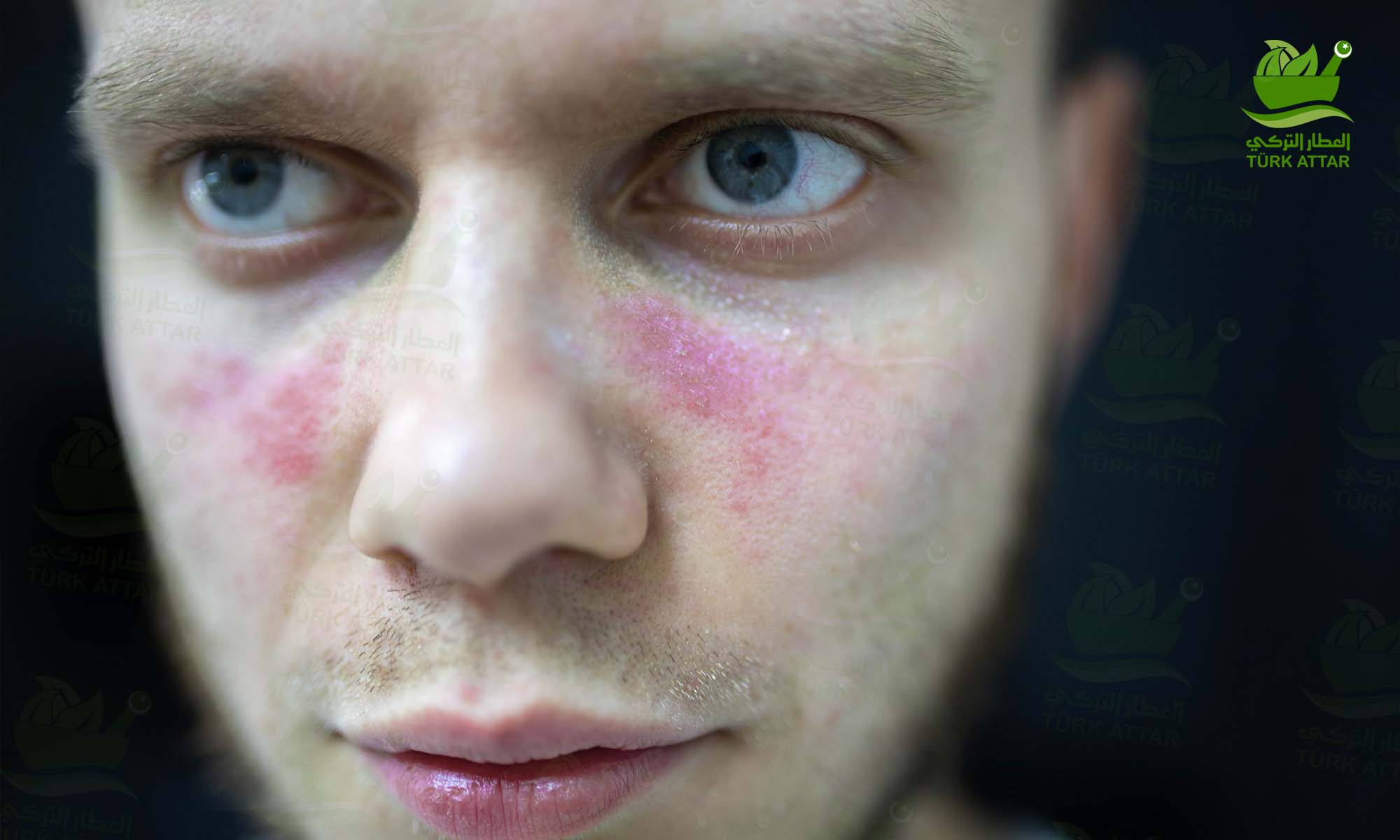
It is a chronic systemic autoimmune disease of unknown cause, characterized by many findings related to inflammation of many tissues and organs such as the skin, joints, kidneys, pericardium, pleura, and various abnormalities of the immune system (immunological).
Systemic Lupus Erythematosus
The disease was first described as a chronic skin disorder by French dermatologist Pete in 1833. The term lupus means "wolf" in Latin and refers to the tissue-destroying property of the lesion. Kaposi noted in 1872 that the disease was systemic. The phenomenon of 'lupus cell' is an important diagnostic finding described by Hargraves in 1948. Later the discovery of antinuclear autoantibodies (ANA) by Frio in 1957 shed light on the autoimmune characteristic of systemic lupus erythematosus (SLE).
How does the disease occur?
In patients with SLE, the immune system is abnormal in all respects, so it is not known what abnormalities are necessary in the formation of SLE. Environmental factors are thought to play a role in the initiation and persistence of SLE in genetically predisposed individuals. An increased incidence of SLE has been observed in some families in Black peoples, the Far East, and Native Americans. If one family member has SLE the risk of SLE in identical twins is increased by about 30% and by 5% for other first-degree relatives.
The idea prevails that environmental factor play a role by triggering a dysregulation of the immune system in genetically predisposed individuals. Among these factors, viruses, ultraviolet rays, and drugs can be counted.
Some drugs such as procainamide, hydralazine, phenytoin, isoniazid, cause ANA to be produced and clinically similar to SLE may be seen. This condition is known as lupus or lupus-like syndrome.
Most infectious agents stimulate immunity and cytokine production and may cause lupus in individuals with a genetic predisposition. Congenital deficiency of complement proteins may be present in lupus erythematosus, C2 deficiency being more common than others.
Complement deficiencies may play a role in disease onset by creating susceptibility to infection. In addition, it should not be surprising that an increase in B cell activity (the cell that makes antibodies) is also essential in the formation of SLE.
The known mechanism of antibody-mediated disease progression is the deposition of antigen-antibody complexes in tissues. The deposits have been demonstrated particularly in the vessels and glomeruli of the kidneys. Autoantibodies developed against intracellular proteins and nucleic acids form diffuse immune complexes by binding to antigens released from dead cells. Our knowledge of the antigen is limited, but it is often the type of IgG antibody. It causes the deposition of immune complexes in tissues causing activation and an inflammatory response. Through the C3a and C5a complement components, inflammatory cells are activated and release inflammatory substances, activation of coagulation cells leads to the formation of a small clot, the production of reactive oxygen metabolites, and the release of hydrolytic enzymes and cytokines that cause direct tissue damage. The constant presence of immune complexes leads to chronic tissue damage. Clinically it results in vasculitis, pericarditis and pleura, skin lesions and nephritis. Scar formation in the organs affected by inflammation and loss of function was observed in the organs affected by inflammation.
The female gender is also an important risk factor for the development of systemic lupus erythematosus. Abnormalities in estrogen (female hormone) and androgen (male hormone) metabolism seen in patients with systemic lupus erythematosus and in mouse models of lupus have now been revealed. In particular, the important role of estrogen in pathogenesis has now been revealed.
The disease:
Lupus erythematosus is not a rare disease. In recent years, the development of sensitive immune tests to identify milder forms of the disease with antinuclear antibodies, anti-DNA and supplementation has led to an increased incidence. The prevalence of the disease has been reported to be 15-50 per hundred thousand. Different geographic regions have a low or high risk of infection. The disease is 3-4 times more common in the black race than in the white race.
Although systemic lupus erythematosus can occur at any age, it is most common between ages 13-40. 90% of patients are women of childbearing age. The female to male ratio is 9/1. Lupus also appears in children and the elderly and is three times more common in girls than in boys.
Clinical results:
Typical SLE is rarely seen in some patients. Often, patients initially have one or two symptoms, such as fatigue and rheumatoid arthritis, and then may develop other symptoms of SLE. The affected organs vary, and the severity of the disease varies with the organ system involved. Lupus erythematosus is characterized by periods of exacerbation and remission. Upon diagnosis, most patients present with basic symptoms such as fatigue, fever, and weight loss. Let us now examine all these findings one by one.
Approximately 90% of patients with lupus erythematosus present as arthritis (arthritis) or joint pain (joint pain) especially symmetrical with occasional swelling of the soft tissues. Less common is arthritis (inflammation of more than one joint). Usually the joints, wrists, elbows and ankles may be affected. Morning stiffness was observed in 50% of patients. Inflammatory findings in the joint may be temporary or chronic. Destructive changes (typical of rheumatoid arthritis) are usually absent in SLE arthritis. The deformities are likely the result of chronic joint injury.
Muscle pain is observed in 1/3 of patients at the beginning of the disease and some patients have muscle sensitivity. There may also be muscle weakness and decreased muscle tissue. Muscle disease is seen due to treatment with corticosteroids or malaria.
Abnormalities of the skin, hair and mucous membranes are the second most common symptom of systemic lupus erythematosus (85% of patients). Many different types of skin manifestations can be seen in lupus. A red, butterfly-shaped rash (rash) that covers the cheeks and bridge of the nose and does not appear in the grooves between the nose and lips can occur without sun exposure, however it can increase with sunlight. The second most common rash in lupus patients is a raised rash that can be anywhere on the body. Exacerbation of skin lesions often precedes systemic exacerbation of the disease. In addition to the above lesions other skin symptoms such as urticaria, bulla (vesicles filled with serum), live reticular (map-like appearance), panniculitis (inflammation of the subcutaneous fatty tissue) and hair loss may also be seen. Oral mucosal ulcers that are often painless occur in the hard and soft palate. Raynaud's phenomenon (whitening of the hands or feet in a cold and redness after a bruise) can be severe enough to cause gangrene.
Photosensitivity is found in 50-60% of patients. In addition to an increase in skin lesions associated with sunlight, an increase in systemic findings may also be observed.
Approximately 50% of patients have clinically significant renal involvement. Renal failure is an important cause of death in patients with lupus erythematosus.
Ocular results are seen in approximately 20% of patients.
Injury to the lung, heart, or peritoneum may occur in lupus erythematosus. Pulmonary membrane injury is found in 30-60% of patients. The patient suffers from side pain that increases with breathing and coughing.
Pericarditis occurs less frequently than pleurisy (20-30%). Although pericarditis is not considered clinical, ECO can detect fluid in the lumen of the membrane.
Although peritonitis (inflammation of the peritoneum) is not common it has been found in 60% at autopsy. In patients with sudden onset of nausea, vomiting, and diffuse abdominal pain, the possibility of peritonitis may be considered.
In systemic lupus erythematosus all layers of the heart are equally involved in the disease. Endocarditis (inflammation of the inner lining of the heart) is the typical cardiac manifestation of this disease. Although it is mostly silent it has been detected in 30% of autopsy studies. Heart valve disease can also be seen in lupus. As a vascular finding, 10% of patients develop intravascular thrombosis mostly in the legs.
The nervous system symptoms are completely different in these patients. In addition to symptoms such as psychosis and depression, seizures, cerebral hemorrhage and temporary paralysis may be seen in patients. Depression and psychosis of psychiatric outcomes may also be associated with the use of corticosteroids in which case discontinuation of the drug is necessary.
Gastrointestinal findings are detected in 50% of patients. Loss of appetite, nausea and vomiting are the most common ailments. These findings may be due to peritonitis, vascular disease in the intestine, or drug treatments. Infection of the GI tract presents as signs of the esophagus, vasculitis feeding the intestine, inflammatory bowel disease, pancreatitis or liver disease.
Mild or moderate spleen size was observed in 20% of patients. During clinically active periods of the disease, diffuse enlargement of the lymph node occurs in half of patients. This finding is more common in children. Blood cell disorders also change with disease activity. The most common finding is anemia. Significant destruction of blood cells is observed in 10% of patients. Apart from this, abnormalities and dips in other blood cells can also be seen.
ANA is not specific to SLE. Positive results indicate lupus erythematosus. ANA 95-98% positive in lupus High levels of dsDNA antagonists from the ANA family may be considered specific for this disease. It is found in 75% of patients.
Complement levels (C3 and C4) are low in active patients.
In active kidney disease proteins, structures, granulocytes and molds are present in the urine.
How to diagnose?
Lupus erythematosus should be suspected in people with a multisystem disease with joint pain.

4 Comment(s)
1
1
1
1
1
1
1
1
Leave a Comment